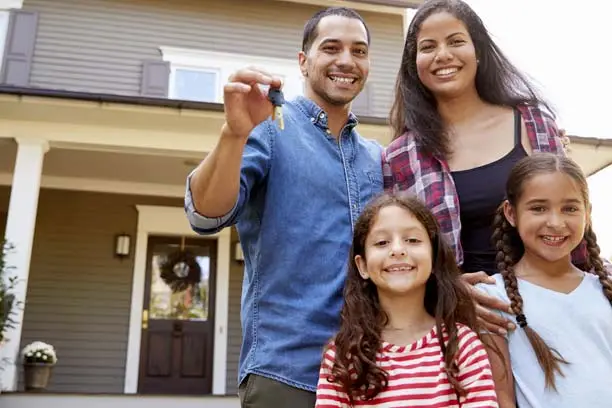Do I Really Need a 20 Percent Down Payment on a Home?


Congratulations! You’ve finally found the perfect home and soon you’ll be a homeowner. But now you have questions. How much should I put down on a house? What kind of loan should I get, and how does that affect my down payment? What’s a reasonable percentage to put down on my first home?
Buying a house is exciting. Getting your ducks in a row, including your down payment, is an important part of the home buying process, especially if you’re a first time buyer. A common guideline suggests an average down payment of 20 percent on a house, whereas the median down payment for all home buyers in 2023 was closer to 15 percent. The down payment you choose can affect your mortgage payments and risk in the future. So how can you know what amount works best for you?
Deciding how much to put down on your new home requires careful thought. Luckily, there are ways to figure out how much to put down on a house. Here’s a guide to help you decide your down payment amount.
Deciding how much you can afford to spend on your new home determines how much you may need up front for a down payment — and the bigger the price tag on your house, the larger the down payment. Ask yourself a few questions: How much can I comfortably afford each month for my mortgage? Home ownership comes with additional monthly expenses that renters typically don’t face like taxes, electricity, water, garbage and more.
When it comes time to decide how much to put down on a house, think about how much it will cost to actually move into your new home, from moving expenses to home repairs. Before you empty your savings account for the down payment, be sure you’ll still have funds for an emergency or unexpected expense. You’ll also want to factor in closing costs.
Different types of mortgages offer various options, so some mortgages may fit your financial situation better than others.
Conventional loans aren’t involved in any government programs and are especially great for borrowers with high credit scores or the ability to make a substantial down payment. If you’re putting down less than 20 percent on a house, then these types of loans generally include private mortgage insurance (PMI), a kind of insurance that protects the lender if you stop making payments. In these cases, PMI is added to your monthly mortgage payment.
A Federal Housing Administration (FHA) loan is generally available to buyers with a down payment of 3.5 percent or more. For home buyers who want to make smaller down payments, it’s typically a good option. But if you have a high credit score or can put down more than 3.5 percent, a conventional loan with a PMI might be a more cost-effective option for you.
If you’re a veteran, you may qualify for a special program offering zero down payments for veterans. State and local programs for lower income borrowers may also be available to you, as well as other programs designed for your unique financial situation. Before you choose your mortgage/loan type, be sure to do your research and compare your options.
Once you’ve decided how much you can afford overall, you’ll need to decide on your down payment. Choosing how much to put down on a house is a personal decision, one that varies based on many factors.
Weigh factors carefully and decide what you can afford, what your future financial situation will look like and how you can best set yourself and your family up for future success.
Buying a home is a big decision and comes with many choices from deciding how much you can afford to picking the right home for you. Your local Farm Bureau agent can help you explore your options when it comes to protecting your new home. Contact an agent today to get a quote and find a coverage option that best fits your needs.